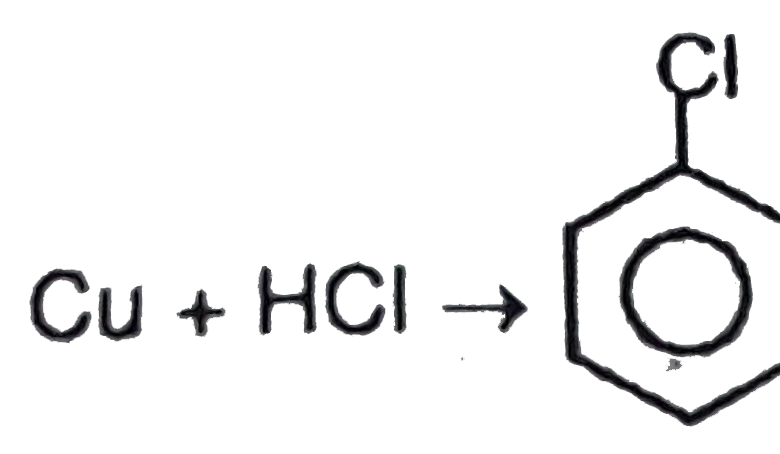Understanding the Reaction of Cu+HCl: A Comprehensive Guide

Have you ever wondered what happens when Cu+HCl? This reaction, or more specifically the lack thereof, is a fascinating topic in chemistry. Although copper is a common and familiar metal, its behavior in the presence of hydrochloric acid is anything but ordinary.
In this article, we’ll dive into the science behind this interaction (Cu+HCl), exploring why copper does not react with hydrochloric acid under normal conditions, and uncover the nuances that make this reaction unique.
The Basics of Copper (Cu)
Copper is a reddish-brown metal that conducts heat and electricity very well. It’s widely used in electrical wiring, plumbing, and even in coins. Chemically, copper is relatively unreactive. It’s a transition metal, sitting in Group 11 of the periodic table, with an atomic number of 29. Copper usually forms two types of ions: +1 (called cuprous) and +2 (called cupric).
Copper’s unreactivity stems from its electron configuration and its relatively high standard reduction potential. This makes copper less likely to lose electrons and form compounds, especially when compared to more reactive metals like zinc or iron.
Hydrochloric Acid (HCl)
Hydrochloric acid is a powerful acid that is often used in labs and factories. It’s composed of hydrogen chloride gas dissolved in water and is known for its high corrosive properties and ability to dissolve many metals. HCl reacts with metals by releasing hydrogen gas and forming metal chlorides. For example:
- Zinc: Zinc reacts with hydrochloric acid to form zinc chloride and hydrogen gas.
Zn + 2HCl → ZnCl₂ + H₂ - Iron: Iron reacts with hydrochloric acid to form iron chloride and hydrogen gas.
Fe + 2HCl → FeCl₂ + H₂
However, not all metals react with HCl in the same way. Copper, as we’ll see, is an exception.
Why Doesn’t Copper React with Hydrochloric Acid?
The reaction between copper and hydrochloric acid doesn’t occur under normal conditions. This is because copper doesn’t react as easily as hydrogen. To understand this, let’s take a closer look at the reactivity series and standard reduction potentials.
Reactivity Series
The reactivity series is a list of metals ranked by their ability to lose electrons and form positive ions. Metals higher in the series displace those lower in reactions. For instance, zinc can displace hydrogen from HCl because it’s more reactive.
Copper, however, is located below hydrogen in the reactivity series. This means copper cannot displace hydrogen from acids like HCl, as it’s less likely to lose electrons.
Standard Reduction Potentials
The standard reduction potential shows how likely a substance is to gain electrons in a reaction. For copper:
- Cu²⁺ + 2e⁻ → Cu: +0.34 V
For hydrogen:
- 2H⁺ + 2e⁻ → H₂: 0.00 V
Since copper’s reduction potential is positive, it indicates copper prefers to stay in its metallic form rather than lose electrons to form Cu²⁺ ions. Consequently, it doesn’t react with HCl to release hydrogen gas.
When Can Copper React with HCl?
Although copper doesn’t react directly with hydrochloric acid, certain conditions can encourage a reaction. These involve introducing an oxidizing agent or altering the environment to make the reaction thermodynamically favorable. Let’s explore these scenarios:
In the Presence of Oxidizing Agents
If an oxidizing agent like hydrogen peroxide (H₂O₂) or nitric acid (HNO₃) is added to the mixture of copper and HCl, it can facilitate a reaction. The oxidizing agent helps convert copper into its ionic form, which then reacts with HCl to form copper chloride (CuCl₂):
- Cu + 4HCl + H₂O₂ → CuCl₂ + 2H₂O
Elevated Temperatures
Raising the temperature can sometimes provide enough energy for a reaction to occur, although this is not common for copper and HCl specifically. High temperatures increase the kinetic energy of molecules, which may overcome the activation energy barrier in certain chemical reactions.
Electrochemical Reactions
In an electrochemical setup, copper can react with HCl if it serves as an electrode in an electrolytic cell. Applying an external voltage can drive the reaction, forcing copper to oxidize and form Cu²⁺ ions.
Practical Applications and Implications
Understanding the interaction (or lack thereof) between copper and hydrochloric acid has practical implications in various fields:
Corrosion Resistance
Copper’s resistance to corrosion by acids like HCl makes it a valuable material in construction, especially in plumbing systems where acidic conditions might be encountered.
Chemical Manufacturing
In industrial settings, copper’s unreactivity is leveraged in equipment that comes into contact with acidic substances, ensuring durability and longevity.
Educational Demonstrations
The non-reactivity of copper with HCl is often demonstrated in chemistry classrooms to teach students about reactivity series and standard reduction potentials.
Common Misconceptions
Copper Reacts with All Acids
While copper doesn’t react with HCl, it does react with strong oxidizing acids like nitric acid. The reaction produces nitrogen oxides and copper nitrate:
Copper reacts with nitric acid to form copper nitrate, nitrogen dioxide gas, and water.
Alternatively, in a more straightforward way:
- Copper + Nitric acid → Copper nitrate + Nitrogen dioxide + Water
This illustrates that not all acids behave the same way when interacting with copper.
Copper Reactivity Can’t Be Altered
As discussed, the addition of oxidizing agents or electrochemical manipulation can induce reactivity in copper. Understanding these conditions highlights the importance of context in chemical reactions.
Experimenting with Cu+HCl: A Lab Perspective
If you’re curious to observe the non-reaction of copper with HCl, here’s a simple experiment:
Materials Needed
- Copper strip or wire
- Hydrochloric acid (dilute)
- Beaker
- Safety equipment (gloves, goggles)
Procedure
- Place the copper strip in a beaker.
- Add a little bit of watered-down hydrochloric acid.
- Observe the setup for any signs of a reaction, such as bubbling (hydrogen gas release) or color change.
Observations
You’ll notice no visible reaction under normal conditions. The copper remains unchanged, and no hydrogen gas is produced.
Conclusion
The interaction Cu+HCl is a prime example of the subtleties in chemistry. While copper does not react with HCl under normal circumstances, understanding why this happens requires delving into concepts like the reactivity series and standard reduction potentials. This knowledge not only enriches our understanding of chemistry but also has practical applications in industry and education.
By exploring the exceptions and conditions under which copper might react with HCl, we see that chemistry is not just about memorizing facts but about grasping the underlying principles. So the next time you encounter copper and hydrochloric acid, you’ll know the science behind their intriguing relationship.
FAQs About Cu+HCl
1. Why doesn’t copper react with hydrochloric acid (Cu+HCl)?
Copper is less reactive than hydrogen and cannot displace it from HCl. This is due to its position below hydrogen in the reactivity series and its positive standard reduction potential.
2. Can copper react with hydrochloric acid under any conditions?
Yes, copper can react with HCl in the presence of an oxidizing agent, elevated temperatures, or under electrochemical conditions that force oxidation.
3. What happens if hydrogen peroxide is added to copper and HCl?
Hydrogen peroxide acts as an oxidizing agent, enabling copper to react with HCl to form copper chloride and water.
4. Is copper resistant to all acids?
No, copper reacts with strong oxidizing acids like nitric acid, producing copper nitrate and nitrogen oxides. Its resistance applies mainly to non-oxidizing acids like HCl.
5. Why is copper used in plumbing despite exposure to acids?
Copper’s resistance to corrosion by weak acids, such as those sometimes found in water systems, makes it ideal for plumbing applications, ensuring durability and longevity.




